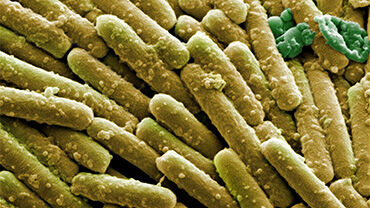Laboratory procedures for diagnosis and typing of human Clostridium difficile infection
The aim of this document is to support Clostridium difficile infection (CDI) surveillance in Europe with appropriate microbiological standardised procedures, and can be used by microbiologists, infectious diseases specialists and infection prevention control specialists.
Executive summary
Chapter 1 summarises the recommendations for CDI diagnostics based on recently published data and discussions with experts of the European Society of Clinical Microbiology and Infectious Diseases (ESCMID) and ECDC. It advises against using molecular tests as stand-alone tests, since nucleic acid amplification tests (NAATs) are not capable of differentiating between asymptomatic colonization of C. difficile and infection by C. difficile. Recent publications indicate that the bacterial load of C. difficile is generally higher in patients with CDI compared to carriers, resulting in a lower cycle threshold (CT) in the PCRs (Crobach et al., 2018). The use of a quantitative NAAT has been implemented in many laboratories and its precise role will be discussed in 2019 when the guidelines will be revised. A worthwhile document to read is the recently published ‘Pitfalls of laboratory diagnostics of CDI’ (Krutova et al., 2018).
Chapters 2 and 3 provide recommendations for culturing and identification of C. difficile from faeces samples, advising on the storage of faeces samples of patients tested positive for CDI to have the possibility of culturing C. difficile for further characterisation, typing and antimicrobial susceptibility testing later. Faeces samples can be unreservedly stored at -20 °C or lower, since the spores of C. difficile remain viable for a long period.
Chapters 4 and 5 contain information on PCR ribotyping of C. difficile using microchip electrophoresis or capillary electrophoresis. An option for analysis of PCR products using ‘Webribo’ is included in Chapter 5, enabling laboratories to type C. difficile using a free online database. Agarose gel electrophoresis is not recommended for PCR ribotyping, as the method provides insufficient inter-laboratory reproducibility, especially compared to capillary electrophoresis (Fawley et al., 2015). Although PCR ribotyping is the standard typing technique for C. difficile, new molecular approaches with data obtained by whole genome sequencing should be further explored, as has already been done for many other bacterial species. The first attempts to use a core genome multilocus sequence typing (cgMLST) scheme are promising and is expected to better standardise C. difficile typing in the near future (Bletz et al., 2018).






